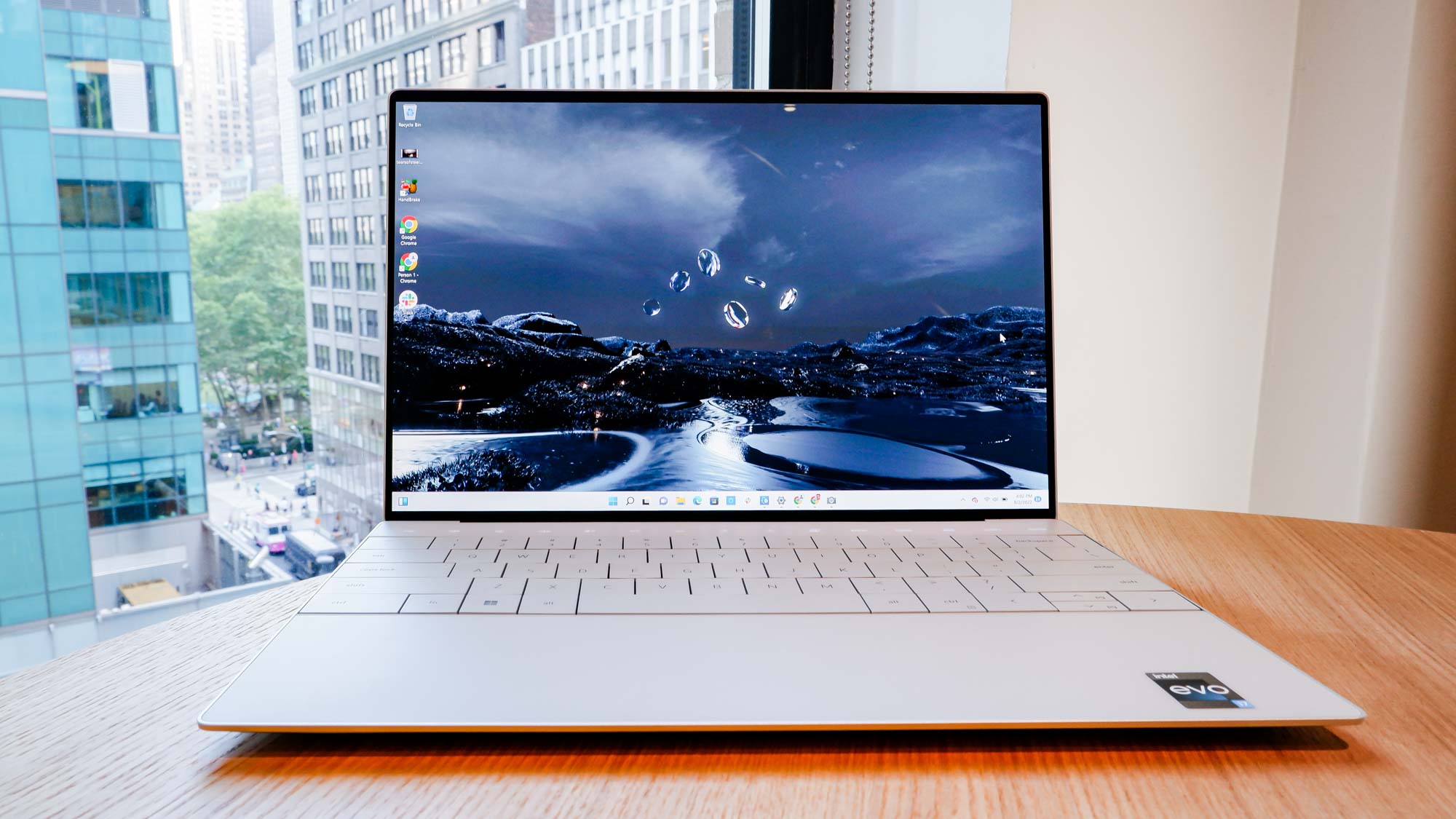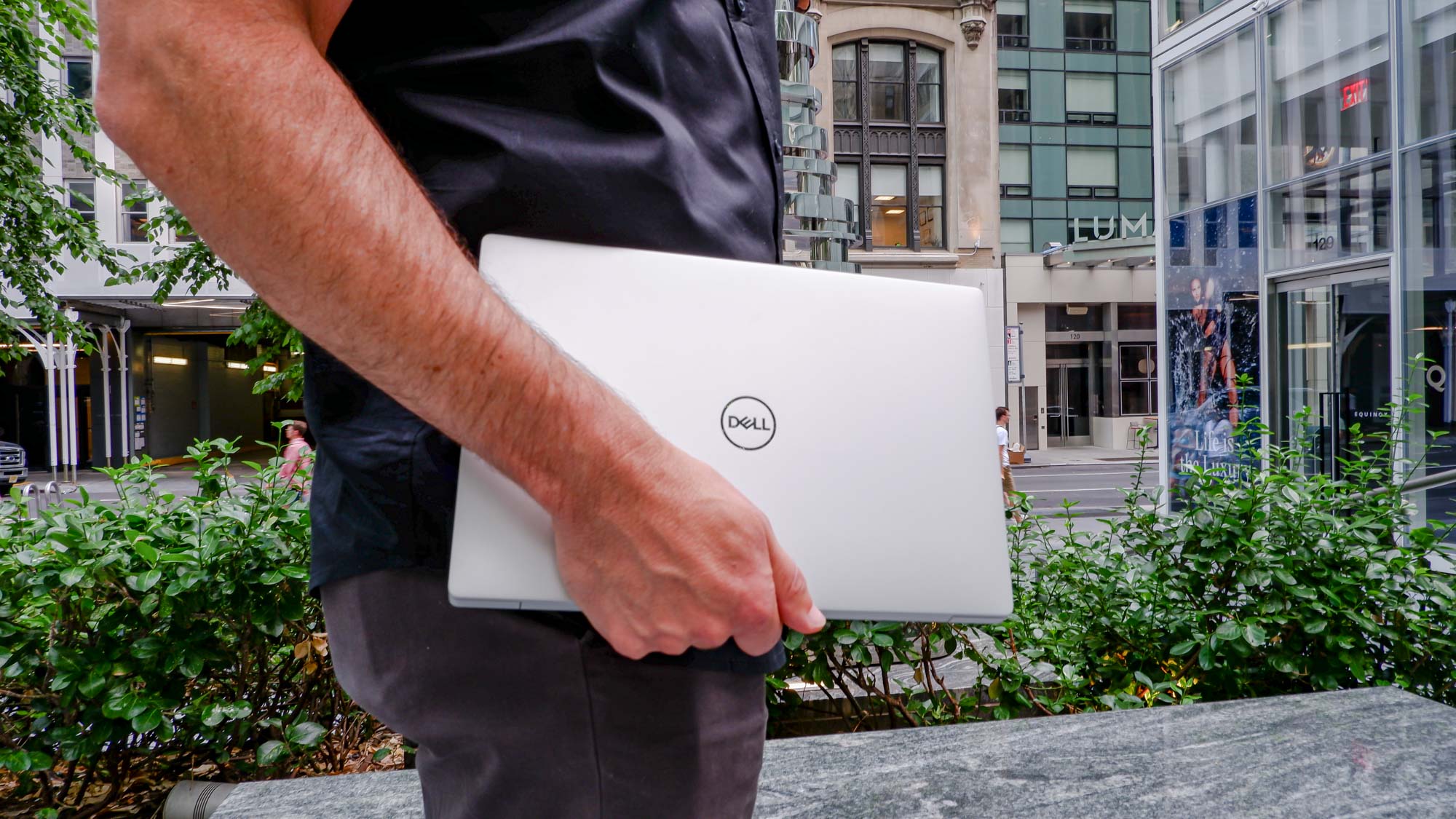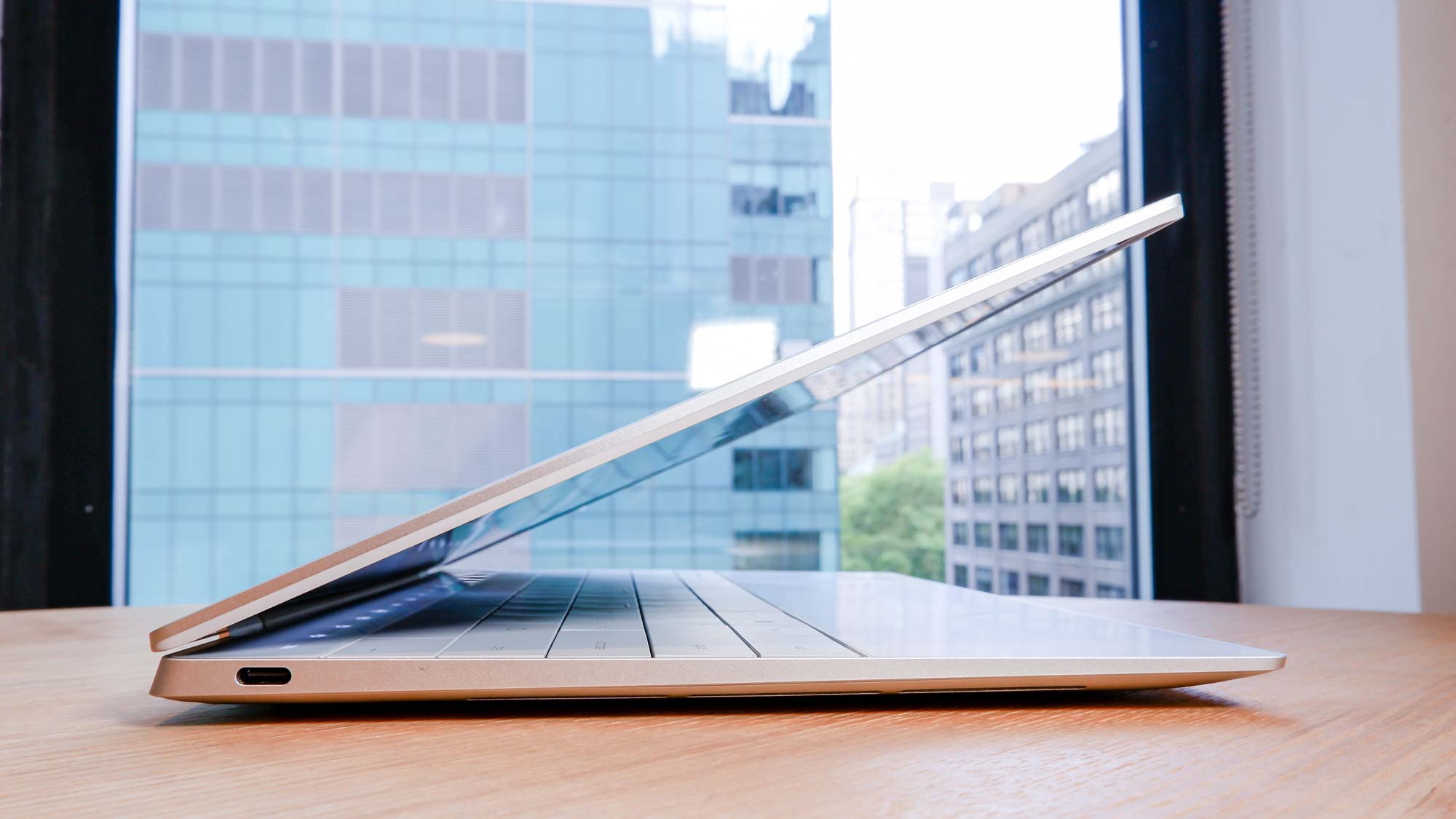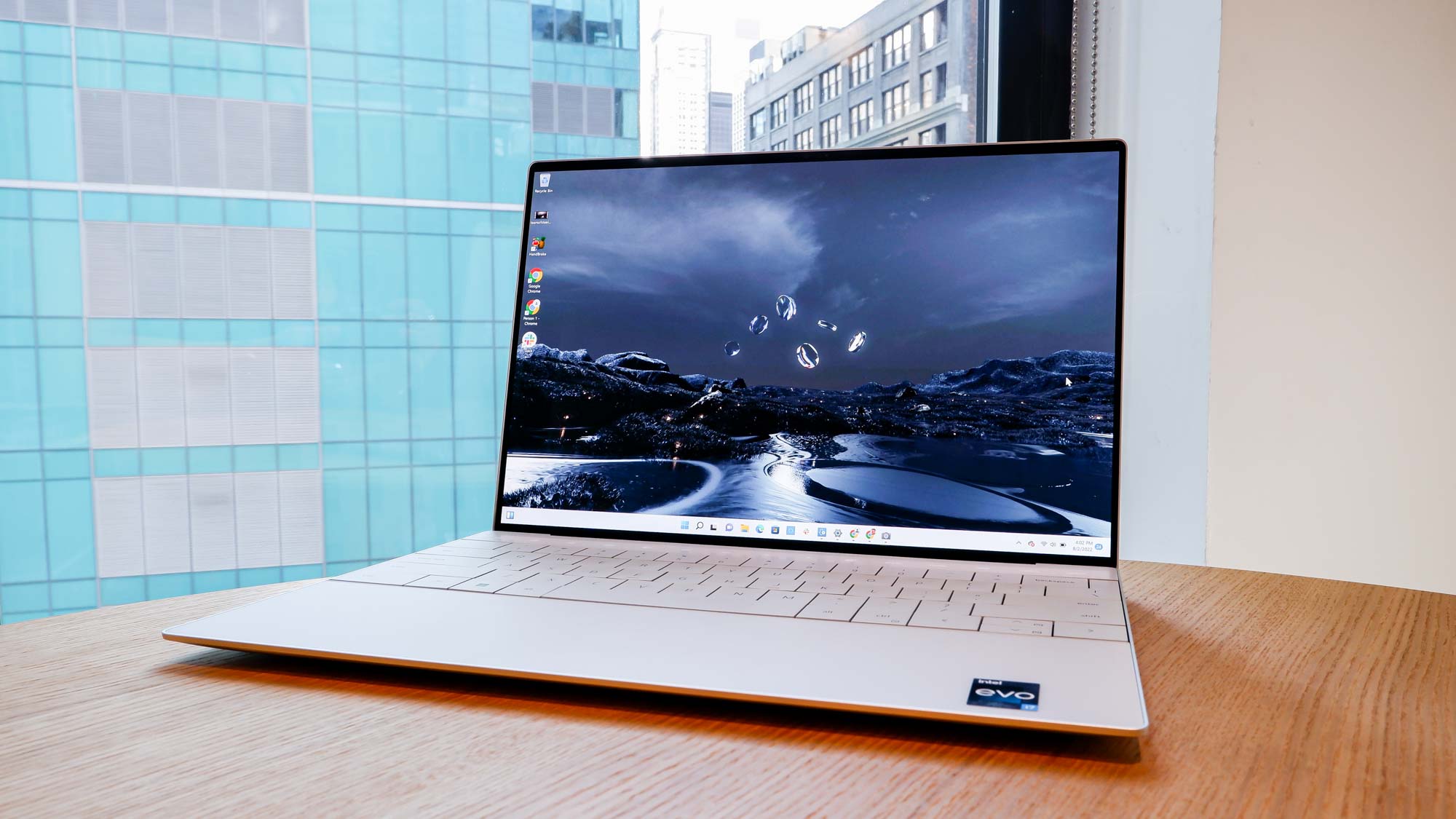Tom's Guide Verdict
The Dell XPS 13 Plus combines a stunning design with very impressive performance for a laptop this compact. And the OLED display and comfy keyboard are both great. But the short battery life and capacitive function row will give some pause.
Pros
- +
Gorgeous design
- +
Bright and vibrant OLED display
- +
Very comfortable keyboard
- +
Strong performance
- +
Powerful audio
Cons
- -
Relatively short battery life
- -
Touchpad can be oversensitive
- -
Bottom runs warm
- -
Capacitive function row lacks feedback
Why you can trust Tom's Guide
Dell XPS 13 Plus: Specs
| Row 0 - Cell 0 | Dell XPS 13 Plus (starting) | Dell XPS 13 Plus (as tested) |
| Price | $1,299 | $1,949 |
| CPU | 12th gen Core i5-1240P | 12th gen Core i7-1280P |
| RAM | 8GB | 16GB |
| SSD | 512GB | 512GB |
| Graphics | Intel Iris Xe | Intel Iris Xe |
| Display | 13.4 inches (1920 x 1200) | 13.4 inches (3456 x 2160) OLED touch |
| Battery | 55Wh | 55Wh |
| Webcam | 720p | 720p |
| Ports | 2 Thunderbolt 4 | 2 Thunderbolt 4 |
| Size | 11.63 x 7.84 x 0.6 inches | 11.63 x 7.84 x 0.6 inches |
| Weight | 2.71 pounds | 2.77 pounds |
Judging by the name, you might think that the Dell XPS 13 Plus (starting at $1,299, or less with one of our Dell coupons) is a bigger version of Dell’s iconic laptop. But it’s actually quite the opposite. This is as minimalist a design as we’ve ever seen from Dell.
There’s just two ports. There’s no headphone jack. And Dell even took away physical function keys, replacing them with a capacitive row. There’s not even lines to denmark the touchpad; the entire area beneath the keyboard is one smooth piece of glass.
But the XPS 13 Plus isn’t just a design statement. Dell managed to pack a 28W 12th gen Core i7 processor into this sleek 2.7-pound machine. And the result is a system that can outperform even the mighty MacBook Pro M2 on some tests.
I’ve been using this laptop for over a week, and as you’ll see in our Dell XPS 13 Plus review, there’s plenty to like about this ultraportable, including its stunning OLED touch display, comfy keyboard and superb performance (especially if you engage Ultra mode). But not all of Dell’s bets have paid off in tinkering with a winning formula.
Update August 31: Some Dell XPS 13 Plus OLED models are suffering an issue where the display is becoming detached due to the glue used. Dell is aware of the issue and is working to rectify it.
Dell XPS 13 Plus review: Price and configuration options
The Dell XPS 13 Plus starts at a fairly steep $1,299, which is the same price as the MacBook Pro M2 13-inch. The starting configuration includes a 12th gen Intel Core i5 processor, 8GB of RAM and 256GB SSD. You also get a 1080p non-touch display.
Our test model costs $1,949, which is around the same price as the $1,999 MacBook Pro 14-inch, and bumps up the CPU to a Core i7 and the RAM to 16GB. Plus, there’s an OLED touch display on board, which is a $300 upgrade on its own.
Get instant access to breaking news, the hottest reviews, great deals and helpful tips.
There are plenty of other XPS 13 Plus upgrade options, including 32GB of RAM, 1 or 2TB of storage, and a 4K display (non touch).
Dell XPS 13 Plus review: Design and capacitive touch function row
The Dell XPS 13 Plus represents a fairly bold departure from the regular Dell XPS 13, which Dell is keeping in its lineup. The look is definitely more clean and modern, starting with a seamless glass touchpad. There’s no parting lines, and I’m not complaining, since I found it easy to navigate the cursor and perform various gestures.

I’m less of a fan of the touch function row. The keys themselves don’t provide any feedback, and the lighting just doesn’t look as premium as the rest of the chassis. And while you can toggle between the function keys and shortcut buttons for things like brightness and volume, you can’t see both at the same time.

Up front, I wish the Dell XPS 13 was easier to open. There’s really no lip to grab onto, so I had to rely on wedging a fingernail in there to lift the lid.

The XPS 13 Plus is fairly light at 2.71 pounds (or 2.77 pounds for the OLED model), and the overall CNC machined aluminum and glass chassis feels sturdy and smooth to the touch. You can take your pick between Platinum and Graphite, and I kind of prefer the latter because it looks a bit more bad-ass.
Dell XPS 13 Plus review: Ports
Welcome to the shortest section of the XPS 13 Plus review. And that’s because there’s very little to say here. This laptop has just two Thunderbolt 4 ports. That’s it, and there’s no headphone jack.


So you basically can plug in only one device while charging the XPS 13 Plus, though Dell includes a couple of dongles in the box. There’s a USB-C to USB-A adapter and a USB-C to 3.5mm adapter. By comparison, the MacBook Air M2 includes two Thunderbolt ports, a headphone jack and a MagSafe power adapter.
Dell XPS 13 Plus review: Display and audio
One thing prospective buyers do need to consider is the ongoing issues the XPS 13 Plus OLED is suffering. A fault with the glue used doing production means the display is falling off some models. Dell is working to recall and repair affected units, but it may be worth holding off until the situation is resolved.
On the positive side, the Dell XPS 13 Plus is a feast for the eyes if you’re willing to splurge on the 3.5K OLED touch display. When I watched The Gray Man on Netflix, I really appreciated the level of detail in Chris Evans’ ribbed yellow-and-brown polo shirt and his gold sunglasses, as well as the bulging vein in his bicep.
As you’d expect from an OLED display, the blacks are perfectly black and the viewing angles are ultra-wide. The image gets fairly bright, too, though not as beaming as the competition. The climactic battle between Ryan Gosling and Evans looked a bit dimmer than I’d like. We measured an average of 366 nits on the XPS 13 Plus’ screen, compared to 495 nits for the MacBook Air M2 and 490 nits for the MacBook Pro M2.

This panel delivers excellent color reproduction and accuracy based on our testing. The XPS 13 Plus registered 118.9% of the sRGB color gamut and 84.2% of the more demanding DCI-P3 color space. The MacBook Air M2 scored a lower 107%/75.9%, as did the MacBook Pro M2 (109.4/77.5%).
Lastly, the XPS 13 Plus turned in a Delta-E color accuracy store of 0.21, where 0 is perfect. The MacBook Air M2 notched a comparable 0.2, and the MacBook Pro M2 scored a worse 0.31.
I was pleasantly surprised by the XPS 13 Plus’ quad speaker setup. When listening to Post Malone and Doja Cat on I Like You (a Happier Song), the Dell delivered more powerful audio than the MacBook Air M2 and punchier vocals. And the plucks of the guitar on Come on Eileen from Dexys Midnight Runners resonated more.
Dell XPS 13 Plus review: Keyboard and touchpad
One of my favorite things about the Dell XPS 13 Plus is the keyboard. At first it looked like the “zero-lattice keyboard” that goes edge to edge with no spacing between the keys would result in a cramped typing experience.
But then I started using the keyboard to write this review and found it extremely comfortable with a surprising amount of travel. On the 10fastfingers typing test, I got 69 words per minute with 93% accuracy, which is within my usual range.

I’m not a fan of the shrunken up and down keys (the left and right arrow keys that flank them are much larger), and I wish the power button were actually marked. It’s right next to the Backspace key and a bit too easy to hit, though at least it’s recessed more than the rest of the keys. One more thing. This might sound nitpicky but the backlighting on the keys looks a bit uneven, which is not something I’d expect for a system at this price.
The glass touchpad on the XPS 13 Plus is generally responsive, despite there not being any lines to mark where it begins and ends. My only issue with the touchpad is that I sometimes accidentally selected text while scrolling if my left hand brushed up against the pad. It’s almost too sensitive. But the Piezo technology used to provide that clicking feeling is very convincing.

On one occasion during my testing the touchpad stopped working altogether and rebooting did not help. But the cursor came back after I performed a system update.
Dell XPS 13 Plus review: Performance
The Dell XPS 13 Plus is designed to deliver pro-level performance in a compact design, and it mostly delivers. I had no problem bouncing between dozens of tabs and Chrome while responding to lots of Slack messages and playing Spotify in the background. My only complaint is that the laptop sometimes lost connection with my iPhone while using it as a personal hotspot, something that usually doesn’t happen with my MacBook Pro 14-inch.
On Geekbench 5.4, which measures overall CPU performance, the XPS 13 Plus turned in a single-core score of 1,797 and a multi-core score of 10,621. And the multicore number jumped to 11,217 when we set the XPS 13 Plus to Ultra performance mode. That beats both the MacBook Air M2 (1,932/8,919) and MacBook Pro M2 (1,898/8,911). The Lenovo Yoga 9i Gen 7 hit just 1,722/7,150.
The XPS 13 Plus also turned in higher scores on the BlackMagic Disk Speed Test, which measures SSD performance. We saw an average read speed of 4,879 MBps and a write speed of 3,638 MBps. The MacBook Air M2 mustered only 2,800/2,210 MBps and the MacBook Pro M2 got a better 2,953/2794 MBps, but that’s still below the Dell.

The XPS 13 Plus sped past the competition in our Handbrake video editing test, which involves transcoding a 4K file to 1080p. The Dell took an average of 8 minutes and 37 seconds in regular mode but just 6:49 in Ultra mode. The MacBook Air M2 took 7:52 to complete the task, and the MacBook Pro M2 (with active cooling) needed 6:51.
Turning to photo editing, the Dell XPS 13 scored 670 on the PugetBench Photoshop benchmark and 691 in Ultra mode. The MacBook Air M2 scored a higher 821, as did the MacBook Pro M2 (817). It was a similar story on Premiere Pro for video editing. The XPS 13 Plus scored 279 in regular mode and 327 in Ultra mode to the Air’s 452 and the MacBook Pro’s 552.
When it comes to graphics, the Dell XPS 13 Plus can run games but not super well. For example, when we ran the Civilization VI benchmark, the system averaged 22 fps at 1080p resolution. The MacBook Air M2 reached 40 fps and the Pro M2 51 fps, albeit at a lower 1440 x 900 resolution.
Dell XPS 13 Plus review: Battery life
Here’s the biggest bummer with the XPS 13 Plus: the battery life — at least for the OLED model. On the Tom’s Guide battery test, which involves continuous web surfing at 150 nits of screen brightness, this laptop lasted only 7 hours and 34 minutes. That’s pretty poor, and it’s actually in line with the 7-hour estimate Dell gives for its own Netflix streaming test for this unit.
To be fair, you should expect much longer endurance if you opt for a regular LCD panel. In fact, Dell rates the XPS 13 Plus for up to 13 hours for the full HD+ model with a non-touch display.

By comparison, the MacBook Air M2 lasted 14 hours on our battery test — so nearly double the OLED XPS 13 Plus — and the MacBook Pro M2 endured for over 18 hours.
The good news is that the Dell XPS 13 ships with a fast charger that promises to get you up to 80% capacity in under an hour.
Dell XPS 13 Plus review: Webcam and security
The XPS 13 Plus makes do with a 720p webcam at a time that many laptop makers are upgrading to 1080p. But I thought the image quality was decent when I put this system up against the MacBook Air in a Google Meet video call.
While the image quality was grainier and darker than I liked, I thought the XPS 13 Plus did a better job capturing more natural colors in my face and blue shirt. And there was more detail in my hair.

When I used a ring light at home the results improved, and I could make out the plants behind me and the Villanova Drive sign in the background. But the image could still be sharper.
One especially nice perk is that the XPS 13 Plus supports ExpressSign-in combined with Windows Hello. So you can sign into the laptop just by standing in front of it, though I wished it worked a bit faster.
Dell XPS 13 Plus review: Heat and noise
The good news is that the Dell XPS 13 Plus didn’t get too loud despite having a fan on board. I noticed the fans whirring up when I had a lot of tabs open at once, but overall it didn’t prove distracting.

However, I did notice that the XPS 13 Plus gets warm, especially on the underside of the system. On our own heat test, which involves playing a high-res YouTube video for 15 minutes, the bottom of the laptop reached 102.6 degrees. We consider anything above 95 degrees uncomfortable. But the touchpad and center of the keyboard stayed relatively cool at 85 and 90 degrees, respectively.
Dell XPS 13 Plus review: Verdict
I have mixed emotions about this laptop. The Dell XPS 13 Plus is one of the most powerful ultraportables ever, and Dell deserves credit for delivering such speed in a design that’s even more compact than the MacBook Air M2 and MacBook Pro M2. The new Dell also offers a very comfortable keyboard and top-notch OLED display (if you’re willing to splurge).
The reason why the XPS 13 Plus doesn’t earn a higher rating is because of its short battery life (though you can expect more endurance from a non-OLED model) and its capacitive function row, which looks and feels a bit chintzy for a $1,200 laptop. And some may be turned off by the dearth of ports and how warm the bottom can get.
In this price range I prefer the MacBook Air M2 for its much longer battery life, more ports and less fussy touchpad. But overall the XPS 13 Plus is a good option if you prefer Windows. You can also check out our detailed Macbook Air M2 vs Dell XPS 13 Plus comparison.
Mark Spoonauer is the global editor in chief of Tom's Guide and has covered technology for over 20 years. In addition to overseeing the direction of Tom's Guide, Mark specializes in covering all things mobile, having reviewed dozens of smartphones and other gadgets. He has spoken at key industry events and appears regularly on TV to discuss the latest trends, including Cheddar, Fox Business and other outlets. Mark was previously editor in chief of Laptop Mag, and his work has appeared in Wired, Popular Science and Inc. Follow him on Twitter at @mspoonauer.


